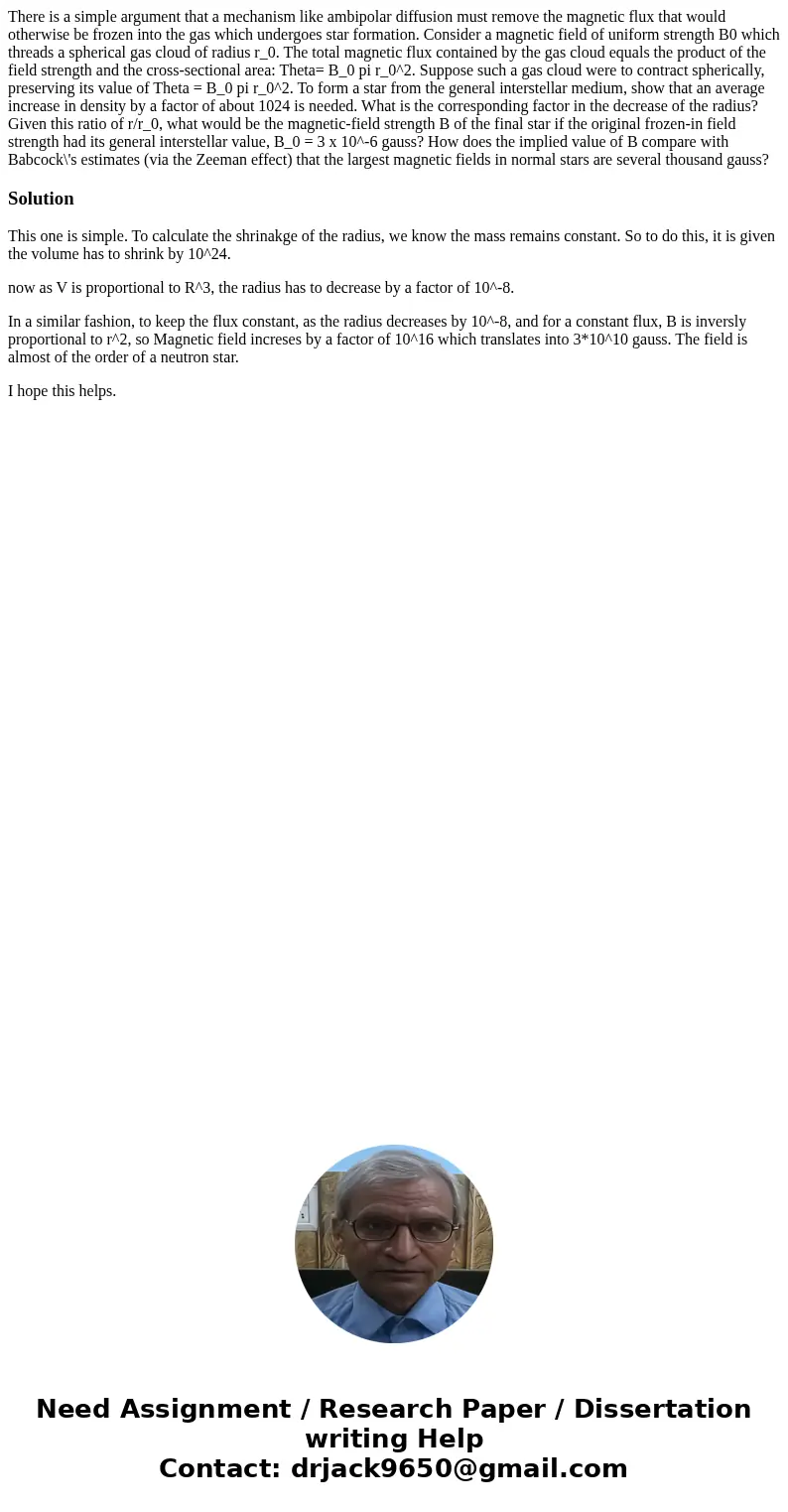There is a simple argument that a mechanism like ambipolar d
There is a simple argument that a mechanism like ambipolar diffusion must remove the magnetic flux that would otherwise be frozen into the gas which undergoes star formation. Consider a magnetic field of uniform strength B0 which threads a spherical gas cloud of radius r_0. The total magnetic flux contained by the gas cloud equals the product of the field strength and the cross-sectional area: Theta= B_0 pi r_0^2. Suppose such a gas cloud were to contract spherically, preserving its value of Theta = B_0 pi r_0^2. To form a star from the general interstellar medium, show that an average increase in density by a factor of about 1024 is needed. What is the corresponding factor in the decrease of the radius? Given this ratio of r/r_0, what would be the magnetic-field strength B of the final star if the original frozen-in field strength had its general interstellar value, B_0 = 3 x 10^-6 gauss? How does the implied value of B compare with Babcock\'s estimates (via the Zeeman effect) that the largest magnetic fields in normal stars are several thousand gauss?
Solution
This one is simple. To calculate the shrinakge of the radius, we know the mass remains constant. So to do this, it is given the volume has to shrink by 10^24.
now as V is proportional to R^3, the radius has to decrease by a factor of 10^-8.
In a similar fashion, to keep the flux constant, as the radius decreases by 10^-8, and for a constant flux, B is inversly proportional to r^2, so Magnetic field increses by a factor of 10^16 which translates into 3*10^10 gauss. The field is almost of the order of a neutron star.
I hope this helps.

 Homework Sourse
Homework Sourse